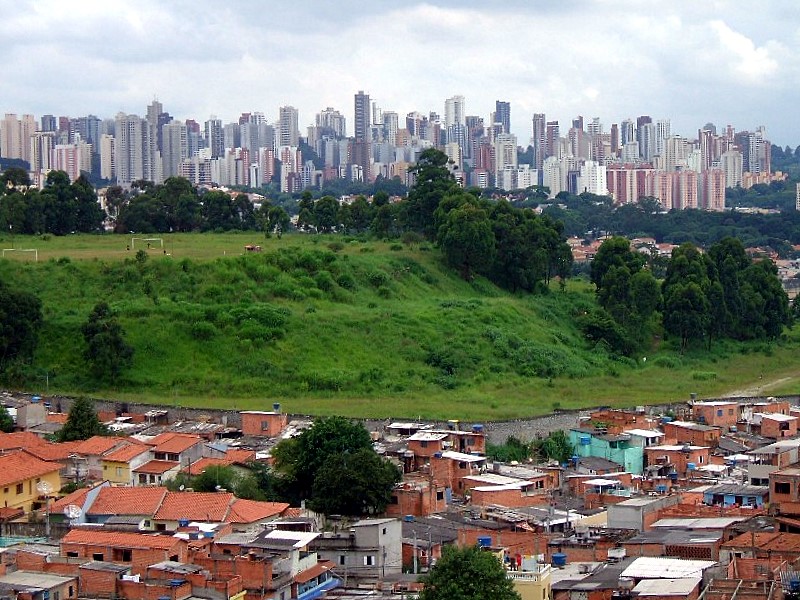Prof David Hulme, Global Development Institute
Oxfam’s reports on inequality have grabbed the headlines over the years – “8 men own the same wealth as 3.6 billion people” won global media coverage a few years ago and challenged many of the world’s business elite at Davos as they pontificated about “what to do about inequality”.
But Oxfam, has also been doing some serious thinking about how to conceptualise and measure inequality. Its Fighting Inequality in the Time of COVID-19 report, produced in collaboration with Development Finance International, moves beyond wealth as the sole measure of inequality to explore a more complex set of crucially important issues. The report focuses not so much on billionaires as on entire national populations and the different capacities they have to cope with the virus and its consequences.
The report’s Commitment to Reducing Inequality (CRI) Index examines three pillars of inequality – public services spending (education, health and social protection), tax progressivity and labour rights & wages – at three different levels – policy, implementation and impact.
This makes for a complicated analysis but it does take the reader deep into the ways that policies and action can reduce, or increase, inequality. Low public spending on health immiserates already poor families as they pay medical expenses, often get low quality services…and can lose the daily earnings of their breadwinners. Not taxing wealthy people and businesses permits inequality to increase rapidly and reduces the social and economic prospects of poorer households (as there’s little redistribution of wealth through public health and education services). And labour markets that allow employers to set wage rates without negotiation ensure that those at the lower end of the wealth spectrum do not receive the value of what they are producing.
The Index is then used to explore how well countries are tackling the lives and livelihoods impacts of the pandemic. The conclusions are stark: we live in a world that has supported the transmission of the virus and that has deepened the economic shocks created by government responses to COVID-19. As the virus moved out of Wuhan the vast majority of countries were actively pursuing policies that increased inequality: this permitted the disease to rapidly spread across populations, have deep impacts, panic governments into ineffective responses and led to inequality rising even more.
As with all analytical tools, the ideas and measures that you use shape the types of conclusions you reach. Not surprisingly, this report finds that reducing inequality and tackling the pandemic more effectively requires increased public expenditure on health, education and social protection; a shift to more progressive national taxation that redistributes more of the incomes of the wealthy into basic services for poorer people; and, higher minimum wages and promotion of workers’ rights.
These conclusions are well-supported by the evidence Oxfam marshals in the report, but they will be challenged by critics who believe that low taxation fosters economic growth and that private provision of health and education is more efficient. Donald Trump will not be quoting this report!
Inevitably for academic readers there will be lots of questioning of the Index: does more expenditure automatically convert into better services; how do you assess the impact of social protection on a national gini index; can higher tax effort mean that poor farmers are being taxed more; and, in largely informal economies, what do government-declared minimum wages have to do with actual wages? There will also be technical questions: why are all three pillars equally-weighted; can you trust the data you get from some regimes; why are the three pillars so rarely correlated in most countries? For example, many countries that are good on public services seem to be bad on tax and vice versa.
And then there are the country rankings. It is no surprise that Norway comes top and South Sudan comes bottom (158 out of 158)…but Singapore comes 107 below Afghanistan’s 102? Notoriously unequal countries (on gini measures) come off quite well. South Africa is at 18, Chile where citizens have been rioting about inequality is 34.
I’ll need a few more hours to wade through the Oxfam appendices. I think I shall disagree with quite a lot of their assessments – but, it will be worth the effort to escape purely income or asset measures of inequality and look more deeply at public policy and implementation.
- Watch: David Hulme’s Covid Catalyst flash lecture
- University of Manchester research addressing global inequalities
- Study: MSc International Development: Poverty, Inequality and Development
Note: This article gives the views of the author/academic featured and does not represent the views of the Global Development Institute as a whole.

